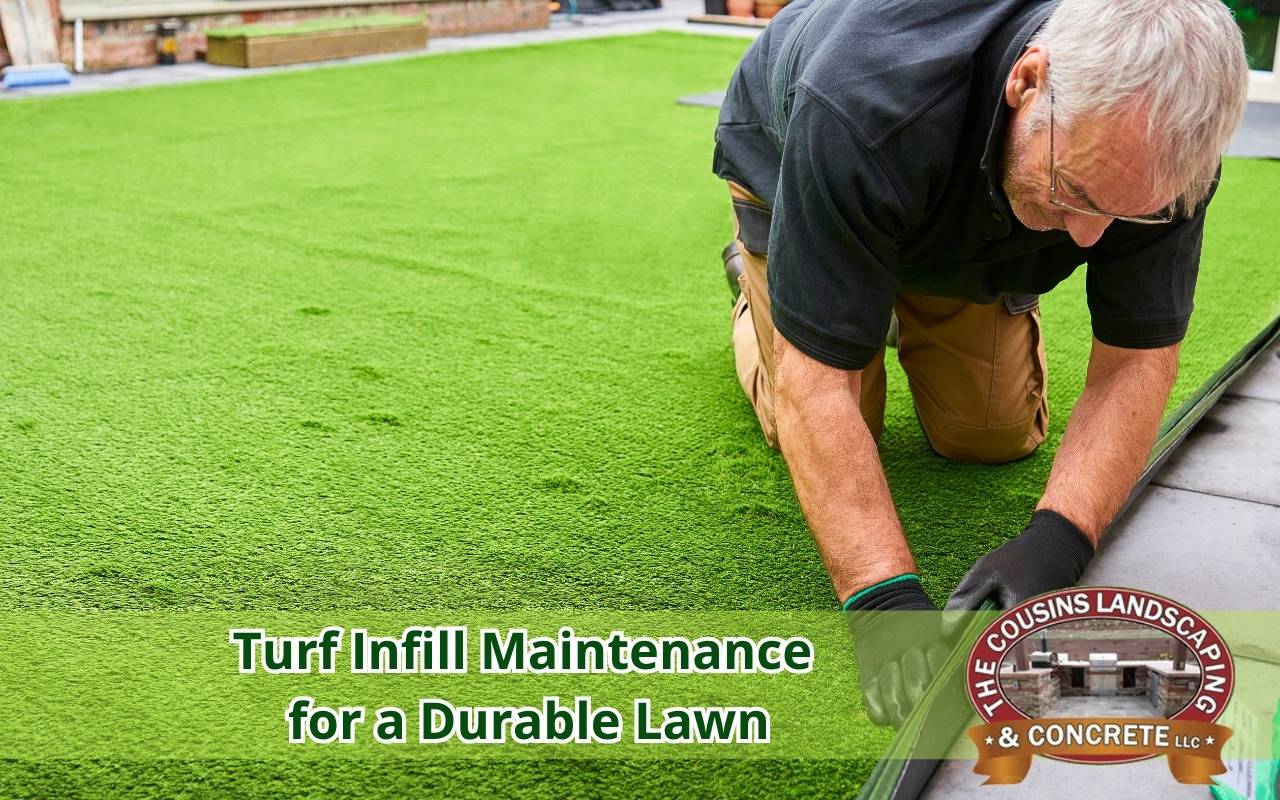
Turf infill might be hidden beneath the surface, but it plays a major role in keeping your artificial grass looking and feeling its best. Whether you use your lawn for relaxing, playing, or pets, proper turf infill maintenance helps protect the surface, support the turf blades, and prevent odor buildup.
At The Cousins Landscaping & Concrete LLC, we help homeowners get the most out of their synthetic lawns with practical artificial grass maintenance tips. Keeping your infill in top shape is key to long-lasting performance.
What Is Turf Infill and Why Does It Matter?
The Backbone of Your Turf System
Infill is the material spread between the turf blades—usually made of silica sand, rubber, or pet-friendly alternatives. It helps the blades stay upright, cushions footsteps, and supports drainage. Over time, infill can become compacted, displaced, or dirty.
If not properly maintained, your turf may flatten, feel hard underfoot, or develop odors, especially in pet areas.
How Infill Affects Performance
Well-maintained infill:
- Keeps the grass blades standing tall
- Reduces surface heat and static
- Enhances drainage and odor control
- Provides a softer, more natural feel underfoot
Regular maintenance ensures all these benefits last for years.
Artificial Grass Maintenance Tips for Infill Care
Brush the Turf Regularly
Brushing helps redistribute infill that has shifted due to foot traffic or weather. Use a stiff, turf-safe broom to lift the blades and move the infill evenly across the surface.
Replenish Infill When Needed
Check your turf’s appearance and feel—if the blades are matting or the lawn feels hard, it may be time to top up the infill. Most lawns need partial replenishment once a year, especially in high-traffic or pet-use areas.
Spot Clean and Deodorize
In pet zones, use a turf-safe enzyme cleaner that reaches the infill layer to break down waste and prevent odors. A deep rinse every month helps maintain hygiene and comfort.
Common Infill Issues and How to Fix Them
- Compacted areas: Brush deeply to loosen and redistribute
- Low spots: Add a light layer of infill and spread evenly
- Odor buildup: Rinse and use deodorizing turf treatments monthly
Maintaining infill doesn’t take long—but it makes a big impact on the turf’s life and feel.
FAQs About Turf Infill Maintenance
How often should I check or top up turf infill?
At least once per year, or more often in high-traffic areas.
Can I add infill myself?
Yes, but even distribution is key. Use a drop spreader or contact a professional for even application.
What type of infill is best for pet turf?
Antimicrobial or enzyme-coated infill is ideal for odor control and drainage. We’ll help you choose the best infill based on your needs—ask
The Cousins Landscaping & Concrete LLC.
Protect Your Turf from the Ground Up
Turf infill might not be visible, but it’s essential to the performance and comfort of your lawn. With regular care and occasional touch-ups, you’ll keep your turf fresh, soft, and resilient for years.
Contact us today for expert turf maintenance, infill service, or custom installation help today.
